Due to the advancement in R&D and latest updates in technologies every day, month and year brings lots of innovations in Industry. The year 2024 witnessed the various technological innovations in Electronics Sector which had change the way we intact with technological aspects in our day to day life.
Here are some electronics technology achievements in 2024:
Semiconductor facilities
In 2024, multiple proposals were approved to set up semiconductor facilities in India, including:
- Tata Electronics Private Limited (TEPL): TEPL’s proposal to set up a semiconductor fab facility in partnership with PSMC, Taiwan, was approved in February 2024.
- TEPL: TEPL’s proposal to set up an OSAT facility in India was approved in February 2024.
- CG Power and Industrial Solutions Limited: CG Power and Industrial Solutions Limited’s proposal to set up an OSAT facility in India was approved in February 2024.
- Kaynes Technology India Limited (KTIL): KTIL’s proposal to set up an OSAT facility in Sanand, Gujarat was approved in September 2024.
AI-integrated processors and chips
AI is being integrated into processors, which is reshaping future hardware. This will allow devices to learn and adapt more quickly, blurring the lines between humans and machines.
Generative AI
Generative AI is a type of algorithm that uses unstructured data to create new content.
Wireless networks
Wireless networks are becoming more environment-aware, enabling functions like localization, environmental mapping, and infrastructure monitoring.
Grace Hopper Celebration
The Grace Hopper Celebration is a gathering of women technologists that will be held in Philadelphia, PA in October 2024.
In this article, we’ll take a look at some of the most prominent quotes from industry leaders and experts, and consider what they might mean for the year 2024 and the future of the Indian Electronics Sector.

Mr. Hitesh Garg, Vice President and India Country Manager: “The Indian automotive industry has emerged as a global powerhouse, with 2024 showcasing remarkable progress in electric vehicle adoption, safety standards, and groundbreaking innovations like Software-Defined Vehicles (SDVs). India’s ascent as the world’s largest two-wheeler producer and the third-largest EV market underscores its leadership in sustainable and intelligent mobility solutions. This journey has been fueled by robust government incentives, expanding charging infrastructure, and a growing consumer shift towards green transportation.
As we look towards 2025, the potential for innovation and growth is immense. SDVs, which transform vehicles into intelligent systems that evolve throughout their lifecycle, are set to revolutionize the driving experience. India’s competitive edge lies in its dynamic talent pool, world-class manufacturing capabilities, and progressive regulatory framework, which collectively create a fertile ground for collaboration and innovation.
The road ahead is one of opportunity and responsibility. Indian OEM’s are coming out with best-in class, highly competitive and futuristic designs on new platforms that are fully designed in India. NXP, together with the key automotive players, is driving towards a smarter, greener, and more connected tomorrow.”

Anku Jain, Managing Director, MediaTek India: “As intelligence takes center stage in technology innovations, the importance of chipsets becomes even more significant. From smartphones, smart homes, satellite connectivity, Generative AI, advanced 5G solutions across 5G FWA, and automotive connectivity to transformative technologies like AI and 5G, MediaTek has laid the foundation for a smarter and more connected world. We believe technologies like Agentic AI, Generative AI, advanced LLMs, and cloud computing have led to a tectonic shift in the industry. India is leading the AI adoption, surpassing the global average, projected to reach $17 billion by 2027. At MediaTek, we are well-positioned to integrate edge AI processing into our diverse product ecosystem. Our 8th-generation NPU in the flagship MediaTek Dimensity 9400 sets the benchmark for existing AI activities and supports AI agents. We are also focusing on bringing our advanced AI capabilities to the next generation of vehicles with the latest MediaTek Dimensity Auto Cockpit chipsets designed for the AI cockpit of the future.”
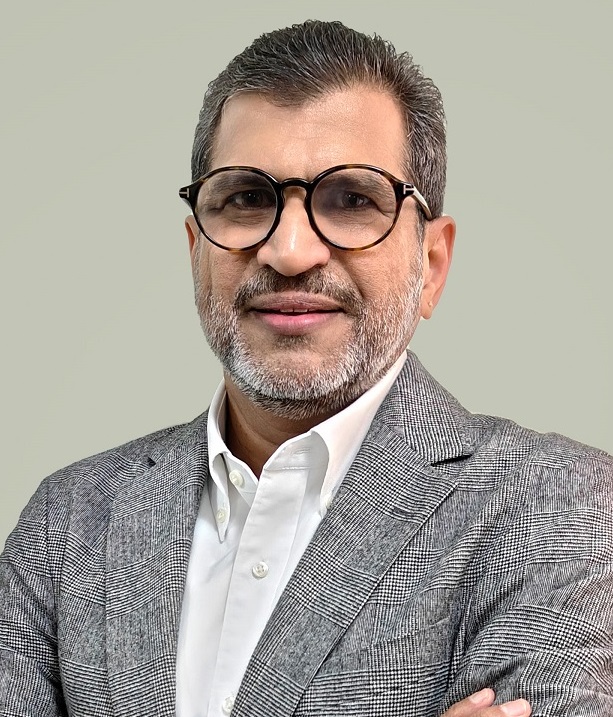
Agendra Kumar, Managing Director, Esri India: “Building a sizable AI computational capability and leveraging GIS for reforms and actions in the management of urban and rural land have been the key highlights of 2024 from the technology perspective. The country’s desire to be recognized as an all-around leader is the inspiration that is driving new research and applications of GIS and remote sensing data. Conducive policies have made it possible for the private sector to adopt location based analytics and data driven decision-making in sectors like agriculture, manufacturing, retail and financial services. Going forward we are looking at higher integration of GIS with new-age technologies such as AI, IoT, AR & VR, and Enterprise IT systems. Other trends like location-focused platform-as-a-service (PaaS), low-code and no-code platforms, 3D GIS, advanced imagery solutions, and digital twins will transform the way geospatial technologies are being consumed and used for developing advanced solutions for industries and masses alike.”
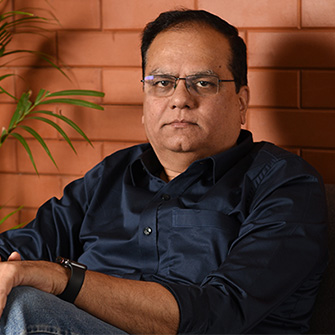
Sachin Saraf, EVP & Chief Operating Officer-DigiTech, Comviva: “As digital transformation continues to accelerate, the telecom industry is evolving to meet the demands of increasingly connected consumers. As 5G technology converges with Generative AI, BSS functionalities are being rewired to allow telecom operators to better serve their customers, optimize their operations, and unlock new streams of revenue. According to an IMARC study, the global market for OSS and BSS is expected to reach USD 142.9 billion by 2032, with a growth rate (CAGR) of 9.8% during 2024-2032 from the market size of USD 59.9 billion in 2023. The convergence of 5G and GenAI is not just a technological upgrade but a strategic imperative. By adopting GenAI-enabled SMART (Self-Monitoring, Adaptive, Real-Time and Transformative) capabilities and leveraging the power of 5G, CSPs have the potential to transform BSS from reactively driven systems into proactive engines for growth. Be it enabling seamless live sports streaming or driving customer engagement through personalized experiences, the marriage of these technologies is revolutionizing the realm of telecom. They lead the charge with innovative GenAI-powered BSS solutions that enable telecom operators to stay ahead of the curve. And more often at the head of the queue, 5G and GenAI promise the future of BSS is one of leading instead of merely keeping up-new benchmarks in both customer experience and operational excellence.”

Matthew Foxton, India Regional President & Executive Vice-President, Branding & Communications, IDEMIA Group: “2024 marked a transformative year for both payment and connectivity, as the rapid growth of 5G, IoT, and digital payments unlocked new opportunities for seamless, secure transactions. At IDEMIA Secure Transactions (IST), we are at the forefront of these shifts. As 5G and IoT drive unprecedented data exchange across devices, we prioritize protecting digital identities and privacy. In payments, our leadership in card issuance, digital services, and fraud reduction through encryption and EMV migration continues to shape the future. As we look to 2025, cryptography, tokenization, and biometric authentication will drive further innovation, while the rise of embedded payments, connected devices, and hyper-connectivity, particularly in the automotive sector, will create smarter, faster, and more secure transaction ecosystems. IST is committed to enabling the future of payments and connectivity, creating a unified and resilient global standard infrastructure.”
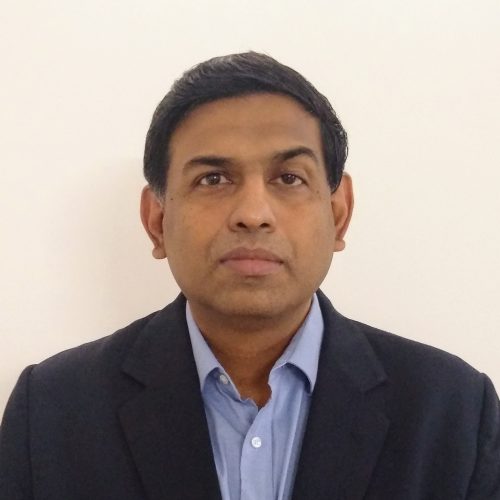
Ganesh Gopalan, Co-Founder and CEO, Gnani.ai: “2024 marked a pivotal year for generative AI, elevating it into a transformative force that redefined industries, from customer service to creative innovations. The year witnessed an exhilarating surge in AI-driven innovations, unlocking unparalleled advancements in efficiency, personalization, and automation. As we look into 2025, the widespread adoption of Small Language Models (SLMs) and Speech-to-Speech Large Language Models (LLMs) is poised to revolutionize sectors like customer support, healthcare, BFSI, automotive, and telecom. These technologies promise to deliver exceptionally precise, low-latency solutions tailored to specialized linguistic demands, with SLMs providing unmatched accuracy for niche tasks and Speech-to-Speech LLMs enabling seamless, real-time multilingual communication. Additionally, Agentic AI, which autonomously adapts and learns, empowers businesses with proactive decision-making and operational intelligence. As these models advance, they are primed to reshape the landscape of Gen AI, fostering a new era of intuitive, efficient, and deeply personalized interactions across the globe.”

Puru Rastogi, Co-founder & CEO, Mowito: “With a focus on precision, adaptability, and innovation, AI and robotics technologies will set new benchmarks, enabling real-time decision-making, predictive maintenance, and smarter robots. By enhancing productivity, reducing manual labor, and fostering safer workplaces, AI-driven automation will propel scalable growth and industrial prosperity. As India’s industrial landscape evolves, AI and robotics will empower dynamic supply chains, equipping workers with groundbreaking tools and shaping a future-ready, competitive ecosystem. The future is clear—2025 will herald a new era of agility and innovation.”
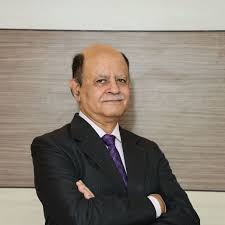
Lt. Gen. Dr. S.P. Kochhar, Director General, Cellular Operators Association of India (COAI): “Indian telecom industry has embarked on an exciting journey in recent years, serving as a catalyst for the country’s socioeconomic growth. Owning a massive 1.2 billion telecom subscriber base, the average monthly data consumption per wireless data subscriber has touched 21.30 GB by October 2024. As of October 2024, over 4,60,592 5G BTS sites were installed, leading to a surge in the 5G user base, which crossed 125 million and is projected to reach 350 million by 2026. Fixed Wireless Access (FWA) emerged as a key 5G use case in India, with connections reaching nearly 3 million within a year of launch. As a major contributor to the GDP, the sector is providing employment opportunities for over 4 million people, directly and indirectly.

Radhika Choudary, Co-founder and Director of Freyr Energy: As the solar industry continues to grow rapidly, the focus is shifting toward quality solar solutions and enhanced customer experience. Over the last decade electricity tariffs have risen by nearly 60%, and by 25% in the last year alone, while solar adoption in India has surpassed 3 million households. Yet, a significant gap remains, with over 300 million potential consumers still untapped. Solar has emerged as the most affordable energy source, supported by abundant financing options and government subsidies. This rapid growth is also expected to create more employment opportunities and drive technological innovation. Companies that prioritize quality products and customer-centric initiatives, such as Solar Experience Centers, are poised to lead the industry and deliver long-term value.”
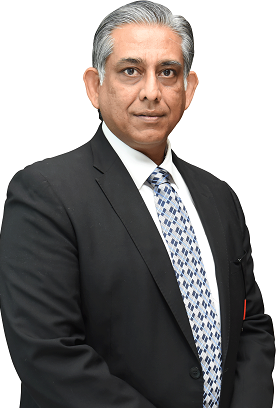
Mr. Amit Sharma, Managing Director & CEO, Tata Consulting Engineers: The Indian engineering consultancy sector has experienced a remarkable transformation in 2024, propelled by a steadfast commitment to sustainability, digital progress, and the adoption of advanced technologies, including artificial intelligence, modular construction, and pioneering innovations in energy storage, small modular reactors (SMRs), semiconductors, high-speed rail and infrastructure as a focus area. At Tata Consulting Engineers (TCE), we are determined to harness this momentum, aligning fully with India’s aspiration to emerge as a global leader in sustainable development, technological self-reliance, and resilient infrastructure.
Our approach remains uncompromisingly innovative, delivering bespoke, end-to-end engineering solutions across an ever-widening spectrum of critical domains. Alongside traditional areas such as renewable energy, transport, water resources, space, nuclear, and defence, we are actively catalysing growth in emerging sectors like advanced battery technologies, PSPs, SMRs, and semiconductors. Through close collaboration with domestic partners, we invigorate the ‘Make in India’ initiative, ensure rapid knowledge transfer, and nurture a dynamic ecosystem of self-reliant manufacturing and cutting-edge research.
As we look to 2025 and beyond, our focus centres on expanding our global presence by delivering transformative projects that seamlessly blend sustainability, innovation, and digital sophistication. By leveraging AI, machine learning, and state-of-the-art project management methodologies, we will provide integrated solutions that uplift communities and industries in India whilst setting new benchmarks on the world stage. Guided by our unwavering commitment to economic growth, environmental stewardship, skill development, and technological excellence, TCE stands ready to shape a smarter, more resilient, and truly “Viksit Bharat.”
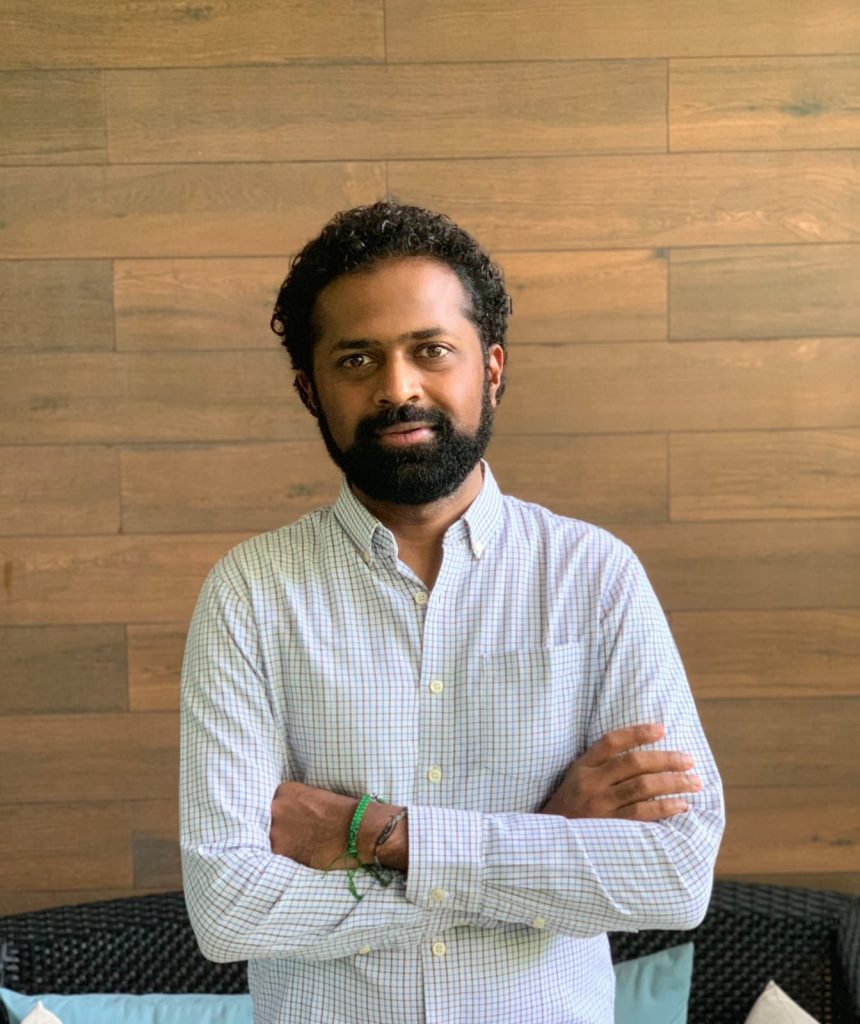
Subbu Venkatachalam, Head of Marketing, Carborundum Universal Limited: As India relentlessly pursues the INR 3 trillion annual defence production target and exports of INR 50,000 crore1, the private sector has a pivotal role in realising this ambition. The Defence Minister recently expressed his expectation of at least 50% contribution towards defence production2 to attain Atmanirbharta. Over the last decade, domestic manufacturers have ramped up, in parallel, steadily expanding their share of contribution to production volumes. This is aptly demonstrated by the fact that the private sector contributed its highest share last fiscal, of 22%, since 2016-173.
With Aero India scheduled to take place in February, we can expect to see some groundbreaking innovations from startups and established players in the sector. Materials science innovations will play a decisive role in reducing import dependence for critical materials in 2025 and beyond. This requires targeted backward integration of premium, globally benchmarked materials which are cost-competitive. Concurrently, it enables domestic manufacturers to widen their export portfolio.
Leading players in the field will have to truly step up by collaborating closely with government agencies to understand the Armed Forces’ modernisation roadmap and apply their expertise to lend a boost to indigenously-developed prototypes. This could be through breakthroughs in materials use, or signing Transfer of Technology agreements with government research organisations such as DRDO to bring in emerging technologies into the manufacturing gamut. This will also help strengthen the domestic supply chain for defence-critical materials.
Open innovation and active research will also play a considerable role in defence innovation in the next five years. Collaborative partnerships with research institutions, hackathons, and associations with startups will help fast-track new product development and accelerate development lifecycles. Sustainable, climate-friendly tech for defence, such as Passive Cooling Materials, will gain more ground and traction. Lastly, the progressive focus on indigenisation will pave the way for significant capacity addition aligned with India’s strategic priorities. This will not only help ably protect our soldiers at the frontlines but substantially bolster our defence capabilities.
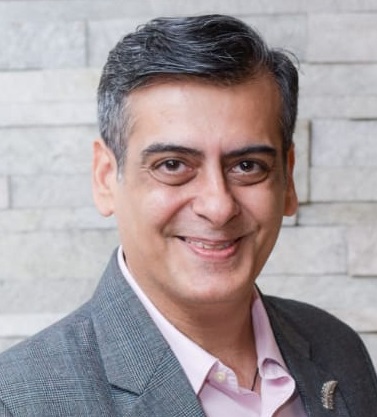
Rajesh Ghanshani – Director of Partnerships, STAAH: “India’s hospitality landscape is undergoing a seismic shift, fuelled by surging travel demand, evolving consumer preferences, and robust digital infrastructure. Increasingly, hoteliers across the country are not just recognizing technology as a strategic asset but they are embracing it as the cornerstone of future success. In fact, many no longer ask ‘if’ they should invest in technology; instead, the focus has shifted to ‘when’ and ‘how’ to deploy advanced solutions that boost operational efficiency, revenue, and guest satisfaction.
Our own experience with Indian hoteliers highlights this transformation. With STAAH solutions—such as the Channel Manager, Booking Engine, and ReviewMinder, hoteliers have reported significant revenue gains and enhanced guest journeys, from pre-arrival research to post-stay feedback. The momentum is tangible: we now partner with over 5,000 hotels across India, and forecasts suggest an even more substantial expansion in 2025. This adoption is not limited to high-end chains or luxury resorts; even boutique and budget properties are adopting innovative distribution platforms to deliver seamless, personalized experiences. As Indian travellers become increasingly digitally savvy, their expectations continue to rise, and technology providers are poised to respond with more adaptive, predictive, and intuitive solutions that define the future of Indian hospitality.”
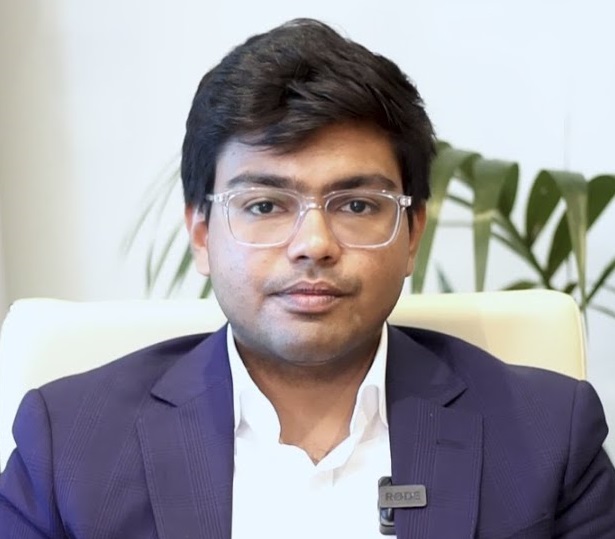
Subin Mitra – CEO & Cofounder, Groyyo: “The recent disruptions in Bangladesh’s textile and apparel sector underscores the vulnerabilities inherent in concentrated global supply chains. Political unrest, catastrophic climate events, and energy crisis can bring entire factories to a halt, causing chunks of garment orders to be delayed or lost. This upheaval has sent international buyers scrambling for stable alternatives and robust, cost effective supply chains, with India emerging as a prime contender; some green shoots towards the same are already visible with exporters in Tirupur witnessing a surge in order placements.
- India’s proven strengths in cotton yarn exports and its expanding infrastructure, bolstered by initiatives like the PLI Scheme for textiles, position it uniquely to absorb this redirected demand. However, this is not merely a matter of opportunity but of responsibility. As global brands navigate supply chain uncertainties, India must demonstrate its ability to deliver both scalability and sustainability. The latter has become an area of critical focus for almost all brands globally – emphasizing on the need for sustainability on not just the shop-floor but also in terms of the raw material utilized in the manufacturing process;
- The next decade will likely witness a recalibration of fashion supply chains, with India taking center stage with its stable geo-political reigns combined with Govt. support for manufacturing. For India, the task is clear – Invest aggressively in manufacturing infrastructure, sustainable practices, and workforce upskilling and cement its reputation as a reliable, innovative, and resilient manufacturing hub, ready to shoulder greater global responsibilities while fostering local growth.”
Key Growth Areas: AI and 6G
The rapid pace of digital innovations in telecom is evident from the massive adoption of Artificial Intelligence (AI) and GenAI technologies across areas like customer service, operational support, network optimisation and automation, predictive maintenance, fraud prevention and so on. According to KPMG India, 55% of the organisations in Technology, Media and Telecommunications (TMT) sectors in India have fully integrated AI, with 37% in the scaling phase.
India is now poised to lead the global race towards 6G, with an exciting opportunity to drive technological leadership. With the on-going efforts like the Bharat 6G Vision, the government aims to create 10% of 6G patents from India and is evaluating 470 proposals on ‘Accelerated research on 6G Ecosystem’. The Department of Telecommunications (DoT) has also funded two next-generation testbeds for advance 6G research.
Challenges Impeding the Growth
Despite the promising advancements, the telecom industry faces several critical challenges, which disrupt the sustainable growth of the ecosystem.
Fair share contribution from Large Traffic Generators (LTGs): The massive traffic created by LTGs has significantly strained telecom networks, compelling TSPs to invest an additional ₹10,000 crore in infrastructure in 2023, according to our study. While TSPs bear these costs, LTGs, without contributing, amass multiple incomes through subscriptions, ads and data-driven marketing, with revenues largely outside India’s tax ambit. COAI estimates a ₹800 crore loss to the Indian exchequer in AGR dues and taxes like GST from top 4-5 LTGs. To address this issue, COAI recommends supplementing the USOF with a Fair Share contribution from LTGs.
OTT Regulation: The regulatory disparities prevailing in the sector are impacting the TSPs adversely, leading to concerns over market fairness, national security and user privacy. While TSPs comply with stringent security and compliance norms, the OTT communication services remain largely unregulated. This absence of OTT regulation under the new Access Service authorization perpetuates an uneven playing field. To address this, the government should enforce traceability and user privacy rules on all calling and messaging apps, as those platforms provide similar services using the internet network.
Allocation of 6 GHz spectrum band: Based on IMT2020 requirement, GSMA estimates that 2 GHz of mid-band spectrum will be needed to meet the expected traffic growth in 5G in India. Since 6 GHz is the last remaining mid-band spectrum where city wide coverage can be provided with mobile networks, it is crucial that this band be allocated to IMT. Further, there is another growing concern of Wi-Fi 6E wireless routers operating on the 6 GHz band being sold illegally via e-commerce websites to consumers in India, although DoT has not decided with regard to its utilisation.
Quality of Service (QoS): Despite meeting TRAI’s stringent QoS benchmarks, TSPs face persistent challenges like Right of Way (RoW) issues, spectrum interference and infrastructure constraints, hindering timely network rollouts. The Telecommunications Act 2023 introduced critical RoW amendments for uniform State laws, but timely implementation is crucial, especially for 5G expansion. Meanwhile, TSPs view the newly proposed QoS norms, including monthly and site-to-cell level reporting, as impractical and overly burdensome.
Unsolicited commercial communication (UCC): TSPs, in collaboration with the government, have been addressing the concerns related to UCCs. In compliance with TRAI’s directives, telcos have implemented the Principal Entities-Tele Marketing (PE-TM) binding process to ensure traceable commercial messaging. However, to fully curb the menace of spam calls, the government should also bring the OTT communications service under the UCC regulation, as these unregulated platforms serve as the hotbed for such pesky communications.
Telecom Equipment Theft: Telecom equipment theft has emerged as a major issue affecting Indian TSPs, incurring an estimated Rs. 800 crore in losses already. Industry sources reveal that over 17,000 radio remote units (RRUs) have been stolen during the first half of 2024 alone, causing major disruptions in 4G/5G expansions and impacting quality of mobile services.
Direct-to-Mobile (D2M) network: The proposed D2M network poses new challenges for TSPs, as it undermines market fairness by creating a separate broadcasting network. COAI has called for transparent auctions of the sub-GHz (526-582 MHz) spectrum, integrating it into telecom networks to maintain fair competition. Additionally, the suggestion for a dedicated D2M network for disaster alerts is unnecessary, as cellular networks effectively deliver alerts via the Common Alerting Protocol (CAP) platform.
Progressive Measures Offer Respite to TSPs amid Industry Concerns
Amidst these setbacks, there are progressive measures initiated by the government aimed at fostering growth and reducing financial burden on TSPs. The abolition of the Wireless Operating License (WOL) and the decision to waive bank guarantee (BG) requirements for deferred spectrum payments from auctions since 2012 are among the progressive measures in favour of the industry. The Hon’ble Supreme Court’s judgment affirming the industry’s right to claim credit for taxes and duties paid on towers and related parts emerge as further relief to the sector.
2024 marked a breakthrough year for Indian telecom industry, thanks to the massive collaborative efforts among operators, equipment vendors and industry experts, as well as the on-going support from the government, regulatory body and other stakeholders. As the industry marches ahead with optimism, driven by aggressive growth strategies and network expansion plans, key challenges persist and they need to be addressed on priority. We are hopeful that TSPs’ continued collaboration with the government and other stakeholders will help them address these challenges to drive further innovation and propel the industry towards new milestones in the coming year.”
Mr. Pankaj Panjwani, CEO and Founder, KeenSemi: “As we close out a year of rapid innovation and progress, Keensemi is proud to be part of India’s semiconductor revolution. With the Indian semiconductor market poised to grow at a CAGR of 25.7%, reaching an expected value of USD 271.9 billion by 2032, the opportunities for technological advancement are vast.
India’s strong customer base and increasing demand for electronics—from data centers, automotive, and smartphones to IoT devices—position us for continued success in this dynamic landscape.
At Keensemi, we remain committed to contributing to this growth by advancing cutting-edge semiconductor solutions that will drive the future of technology.
As the country accelerates its push towards self-reliance in semiconductor manufacturing, we are excited to be at the forefront of this transformation, delivering innovative solutions that meet the needs of a rapidly evolving digital economy.”












